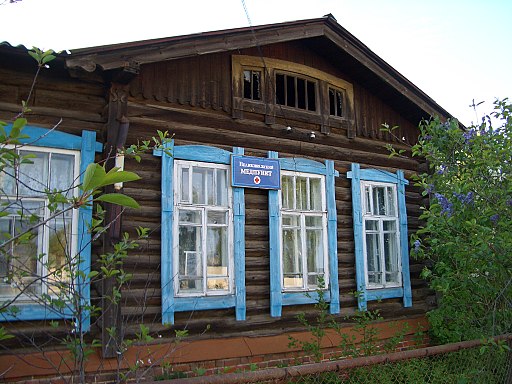What Bulgakov can tell us about reforming nursing in the former USSR
By Sean L Hanley, on 13 November 2012
Re-reading Bulgakov leads health researcher and guest contributor Erica Richardson to some sharp realisations about primary healthcare in the former Soviet Union
I have now reached an age when I can go back to novels I read twenty years ago, reread them with fresh eyes and experience the joy of new discoveries. Most recently, this has involved revisiting A Country Doctor’s Notebook by Mikhail Bulgakov, a collection of short stories based on his experience as a newly qualified doctor sent to a remote region for his first job practicing medicine. I sincerely believe it is essential reading for all new doctors and cannot recommend it highly enough. In the 1990s, I was struck by how little had changed in the rural Russian landscape despite the electrification and mechanisation drives under Stalin. In 2012, I was struck by the way in which different members of the clinical team were presented.
Maybe this is because I’ve recently returned from Minsk, Belarus where I was representing the European Observatory on Health Systems and Policies at a sub-regional policy dialogue on human resources in countries of the former Soviet Union. As an aside to discussions about skill-mix and task shifting, a fascinating discussion developed around the concept of a ‘nurse’ and in the post-Soviet context, and where ‘feldshers’ fit into the picture. Nurses have their distinct heritage and philosophy which is focused on ‘care’, while the doctors are more focused on providing ‘treatment’. So what’s a feldsher?
Feldsher comes from the German Feldscher – a paramedic in the Prussian army who treated those wounded on the battlefield. Peter the Great saw them and thought they were a great idea, so he recruited young men to work as military paramedics in the Russian army. In wartime their role was clear, but in peacetime there was a large cadre of skilled medics with nothing to do, so they were employed in rural areas as a much more affordable alternative to calling out the doctor.
If this sounds familiar it is because history has repeated itself a couple of times, for example with physicians assistants being a convenient civilian role for hospital corpsmen returning from the Vietnam War, and the civilian role of paramedic developing in the UK after World War II. As time went on, the feldsher’s role of expanded to cover midwifery skills in order to maximise their utility. This is where the Feldsher-Accousher combination came about (and the gender balance changed), but they continued to serve remote populations. The new battle Feldshers faced was with the doctors, who felt their authority (and market share) was being undermined.
All of these points come across very clearly in Bulgakov’s stories. The doctor identifies his clinical team as an enlightened “warrior band” facing a swirling blizzard of ignorant and superstitious peasants. The medical team is just four people – the young doctor, and the very experienced trio of feldsher and midwives – alone in the wilderness. Having learnt through a yearlong baptism by fire how to actually practice medicine and not just study it, the young doctor reflects that: “I cannot […] honestly imagine being brought a case that would floor me … perhaps in Moscow they might accuse me of a ‘feldsher’ attitude to medicine … well, let them”. The team are clearly described and always referred to by their full name and patronymic, the equivalent of using ‘Mr’. However, ghostly unnamed nurses are also present in the village hospital, but they are not described beyond their clothing and only one has a name; she is also married to the night watchman. She is known just as Aksinya.
Nurses in Imperial Russia, evolved from the Sestry miloserdiya, literally ‘Sisters of Mercy’, which worked in charitable, mainly church, facilities with doctors in charge. The charitable / religious connotation put nursing in a vulnerable position come the October Revolution, and for a number of years in the 1920s, no nurses were trained at all; the Bolshevik government considered feldshers superior and nurses to be superfluous. They quickly changed their mind and started training nurses again, but the hierarchical three tier Soviet system – doctors at the top, feldshers in the middle, nurses at the bottom – was fixed.
Since the collapse of the Soviet Union, although the need for medical care in remote rural regions remains, feldshers have almost become an anomalous group, which do not seem to fit easily into health system reform programmes in the post-Soviet space. These programmes have often sought to expand the role of primary care doctors to embrace a general practice / family medicine model and to develop nursing as a profession.
Perhaps a clearer understanding how feldshers came to fill their important role is also needed, along with a more nuanced understanding of what it means in contemporary medical culture in the region. The lowly status of nurses is nothing new, and it is not unique to the health systems which have evolved out of the Soviet tradition. But the challenge in reinventing the perception of the nurse as a member of the medical team who can take on advanced roles should not be underestimated, and interpreting the feldsher as a de facto nurse practitioner would also be problematic.
Erica Richardson is Honorary Research Fellow at the European Observatory on Health Systems and Policies at the London School of Hygiene and Tropical Medicine (LSHTM), University of London. Her research focuses on the development of health systems, health policy and health education in countries of the former USSR.
The piece first appeared on the ECOHOST blog at the LSHTM and is reproduced with permission.
Note: This article gives the views of the author(s), and not the position of the SSEES Research blog, nor of the School of Slavonic and East European Studies, nor of UCL
 Close
Close



